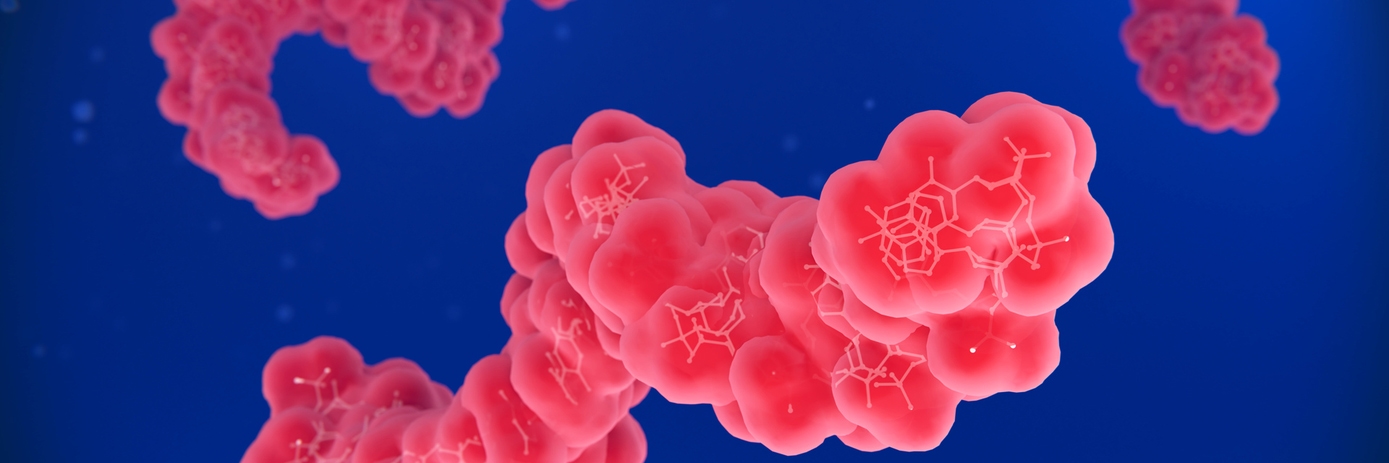The 2024 Nobel Prize in Physiology or Medicine was awarded to Victor Ambros and Gary Ruvkun for their groundbreaking discovery of microRNA and its pivotal role in post-transcriptional gene regulation. Ambros and Ruvkun's work, which began with studies in the roundworm Caenorhabditis elegans, revealed that a small non-coding RNA molecule, lin-4—can bind to the messenger RNA (mRNA) of lin-14 and inhibit its protein synthesis.1,2 Ruvkun’s later studies of the highly conserved 21 nucleotide let-7 RNA suggested that a vast family of non-coding RNAs we now refer to as microRNAs play a role in governing cell fate throughout the animal kingdom.3,4 Their findings revolutionized our understanding of how genes are regulated, revealing another fundamental mechanism through which cells control protein production.
MicroRNAs have since been identified as key players in numerous biological processes, including cell differentiation, apoptosis, and immune responses. Their dysregulation has been linked to various diseases, such as cancer, diabetes, and neurodegenerative disorders. Ambros and Ruvkun's pioneering work not only deepened our knowledge of molecular biology but also opened new avenues for therapeutic interventions, enabling researchers to target specific genes with unprecedented precision.
Revvity’s advanced tools for microRNA research
Researchers can leverage Revvity's versatile tools to further explore microRNA involvement in biological and disease pathways and to identify and validate microRNA targets. Dharmacon™ miRIDIAN™ microRNA Hairpin Inhibitors are single-strand chemically-enhanced RNA oligonucleotides that offer a loss-of-function approach by selectively binding and sequestering mature miRNA thereby inhibiting target microRNA activity. Conversely, Dharmacon miRIDIAN microRNA Mimics are double-stranded RNA oligonucleotides designed to mimic the function of endogenous, mature microRNA that allow researchers to simulate miRNA overexpression. Dharmacon shMIMIC lentiviral microRNAs enable stable or inducible over-expression of each mature human, mouse and rat microRNA in the miRBase 21.0 database, making them ideal for long-term studies, especially in hard-to-transfect cells. With customizable promoters and reporters, this technology offers unparalleled flexibility for tailoring experiments to one’s research needs.
Another powerful tool for microRNA research is Revvity’s NEXTFLEX Small RNA Sequencing Kit
 NEXTFLEX Small RNA Sequencing Kit V4
Discover
, which is ideal for profiling miRNA expression patterns, discovering novel miRNAs, and analyzing their roles in gene regulation and disease pathways. The kit streamlines the library preparation process for small RNA sequencing on Illumina® and Element Biosciences® platforms, offering a gel-free workflow that reduces bias to ensure accurate representation of miRNA populations. It can be used to prepare libraries from purified miRNA or total RNA, even with low-input samples, making it ideal for challenging specimens like plasma, serum, or exosomes. The kit's compatibility with automation platforms also enhances reproducibility and scalability, enabling high-throughput studies.
NEXTFLEX Small RNA Sequencing Kit V4
Discover
, which is ideal for profiling miRNA expression patterns, discovering novel miRNAs, and analyzing their roles in gene regulation and disease pathways. The kit streamlines the library preparation process for small RNA sequencing on Illumina® and Element Biosciences® platforms, offering a gel-free workflow that reduces bias to ensure accurate representation of miRNA populations. It can be used to prepare libraries from purified miRNA or total RNA, even with low-input samples, making it ideal for challenging specimens like plasma, serum, or exosomes. The kit's compatibility with automation platforms also enhances reproducibility and scalability, enabling high-throughput studies.
microRNAs as bidirectional regulators
Recent research continues to shed new light on microRNA function. In January, the Mahal lab published a study challenging the canonical view that miRNA binding of the 3′ untranslated region (3′UTR) results in downregulation of protein expression.5 The group employed both Dharmacon miRIDIAN microRNA Mimics and miRIDIAN Hairpin Inhibitors to investigate miRNA co-regulation of functionally coupled proteins CD98hc and ST3GAL1/ST3GAL2, which are critical to melanoma progression and survival. A miRIDIAN microRNA Mimic library was paired with the previously developed miRFluR assay, a genetically encoded fluorescent sensor regulated by 3′UTR of the gene transcript of interest, to identify miRNAs that up- or down-regulated CD98hc, ST3GAL1, and ST3GAL2 respectively. miRIDIAN Hairpin Inhibitors targeting up-regulating miRNAs (up-miRs) were then transfected in multiple melanoma cell lines with reduced expression of CD98hc, ST3GAL1, and ST3GAL2 observed, demonstrating that endogenous up-miRs enhanced their respective target’s expression. Subsequent site-directed mutagenesis of potential miR binding sites in the 3’ UTRs of CD98hc, ST3GAL1, and ST3GAL2 confirmed that melanoma-associated miR-1246 and miR-30b-5p mediate up-regulation through direct interactions with the 3’UTRs of these transcripts. Their careful study provides compelling evidence of miRNA-mediated up-regulation, positioning miRNAs as bidirectional tuners of protein expression.
Building on the seminal work of Victor Ambros and Gary Ruvkun, microRNA research continues to transform our understanding of gene regulation and disease. With Revvity’s advanced tools scientists can explore miRNA function with precision unlocking new possibilities for diagnostics and treatment.
Learn more about our tools that support microRNA research.
References:
- Lee, Rosalind C., et al. “The C. Elegans Heterochronic Gene Lin-4 Encodes Small RNAs with Antisense Complementarity to Lin-14.” Cell, vol. 75, no. 5, 1993, pp. 843–54, https://doi.org/10.1016/0092-8674(93)90529-Y.
- Wightman, Bruce, et al. “Posttranscriptional Regulation of the Heterochronic Gene Lin-14 by Lin-4 Mediates Temporal Pattern Formation in C. Elegans.” Cell, vol. 75, no. 5, 1993, pp. 855–62, https://doi.org/10.1016/0092-8674(93)90530-4.
- Reinhart, Brenda J., et al. “The 21-Nucleotide Let-7 RNA Regulates Developmental Timing in Caenorhabditis Elegans.” Nature, vol. 403, no. 6772, 2000, pp. 901–06, https://doi.org/10.1038/35002607.
- Pasquinelli, Amy E., et al. “Conservation of the Sequence and Temporal Expression of Let-7 Heterochronic Regulatory RNA.” Nature, vol. 408, no. 6808, 2000, pp. 86–89, https://doi.org/10.1038/35040556.
- Jame-Chenarboo, Faezeh, et al. “Screening the Human MiRNA Interactome Reveals Coordinated Up-Regulation in Melanoma, Adding Bidirectional Regulation to MiRNA Networks.” Science Advances, vol. 11, no. 2, Jan. 2025, p. eadr0277, https://doi.org/10.1126/sciadv.adr0277.


































